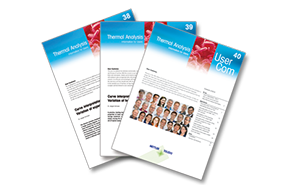Webinar – Calibration and Adjustment in Thermal Analysis
Learn the Importance of Regular Calibration and Adjustment and Its Corresponding Workflows
You expect that your thermal analysis instrument is always accurate, true and precise and delivers reproducible results within a given range.
A calibration determines whether your module is delivering correctly measured values or needs an adjustment. In Thermal Analysis, different parameters must be calibrated (e.g. temperature, heat flow, mass, length, modulus).
Regular calibration and adjustment is essential for every laboratory to help ensure the integrity of your results. The thermal analysis calibration and adjustment webinar by METTLER TOLEDO explains why regular calibration and adjustment are important during the lifetime of your instrument.
Depending on its type, each instrument has different parameters that need to be considered for calibration. The temperature needs to be calibrated for all instruments. In addition, the specific quantity measured by the instrument has to be calibrated, for example, heat flow for DSC or displacement in TMA.
Webinar content
- Background information
- A simple workflow for calibration and adjustment
- Various adjustment possibilities
- METTLER TOLEDO's FlexCal® − the database for adjustment parameters.
When is calibration called for?
- With a new instrument
- When a specified time period has elapsed
- When an instrument has suffered a shock or experienced vibrations Which potentially may have put it out of calibration
- Whenever observations appear questionable




